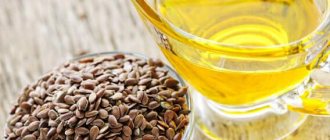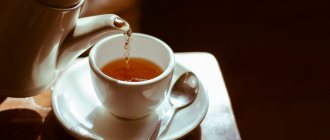Almost every person has encountered such a physiological phenomenon as bloating and pain inside the abdomen. The intestines are always filled with gases, but their normal volume does not exceed 1500 ml. Part of this volume is formed inside the gastrointestinal tract as a result of the vital activity of natural microorganisms; a small portion enters through the nasopharynx when a person talks while eating. If the gas volume increases to 3000 ml or higher, this process is accompanied by severe discomfort and pain of varying intensity.
Dietary causes of bloating
Bloating in a healthy person is caused by the consumption of foods that by default make the stomach bloat.
Having gotten rid of addiction to any product that constantly provokes unpleasant symptoms, a person completely eliminates the symptoms associated with flatulence and no additional treatment is required. The entire mass of products that cause bloating is sorted into groups (each individual has a reaction to one or more products):
- products with coarse fiber and fructose - cabbage, turnips, peas and legumes, tomatoes and onions, grapes or apples;
- products that stimulate rotting in the intestines - most of all, baked goods and rye bread provoke fermentation processes in the body;
- foods with gluten – sauces, different types of sausage, cereals;
- milk and any products made from it - the problem is the lack of a special enzyme for digesting lactose and intolerance to specific proteins.
The list of foods that cause bloating is not limited to this; you can include fast carbohydrates, which include chocolate and other sweets, and carbonated drinks with sugar or yeast (kvass, beer). The way you consume food also often affects your tendency to bloat - you can’t eat on the run, constantly snack, overeat, indulge in spicy or fatty foods with a huge amount of calories per 100 grams, overly enthusiastically communicate while eating, swallowing not only calories, but also air. By the way, air is also swallowed when smoking, inflammatory diseases of the throat, or having braces and dentures.
Fructose and fiber from fruits, legumes and vegetables (and usually carbohydrates themselves in excess), consumed without measure, are difficult to digest or are not absorbed at all by the body. Accumulating in the intestines, they cause a fermentation process, as this is a fertile environment for the development of bacteria. Bloating is not uncommon in people who decide to improve their diet and suddenly add more vegetables and fruits to it - it is necessary to increase the amount of plant foods gradually in order to prevent the appearance of bloating, and then flatulence.
It is not only the product in its pure form that causes problems, but also some combinations. Refrain from combining kefir with fresh bread, grains with sour plant products, cereals with milk.
There are a few simple rules that will help reduce the number of stomach problems. It is better to eat fruits after the main meal, and do not mix several fruits at the same time. Products with fiber are recommended to be stewed and baked (the same applies to fruits), as well as peeled. Beans should be soaked before cooking (lentils are the least “dangerous” of all legumes).
Causes of bloating, in addition to those caused by diseases, include:
- premenstrual syndrome in women - often accompanied by various types of disorders;
- pregnancy - the fetus mechanically puts pressure on the intestines, and its work becomes more intense;
- difficulty in flatulence at night - the posture adopted by the person interferes, after waking up the cause is eliminated (symptoms disappear with the onset of activity).
Main symptoms of intestinal pathology
In most cases, unpleasant signs of distension in the gastrointestinal tract are the result of an incorrect combination of products, an unbalanced dietary regimen, or congenital intolerance to any substances included in the products. But if such serious systemic disorders as hepatitis, liver tissue necrosis, pancreatic dysfunction (pancreatitis) were previously diagnosed, systematically occurring pain and increased gas formation indicate the manifestation of these anomalies.
The main signs of disorders to which the intestines are exposed are:
- a sharp increase in abdominal diameter;
- acute spasmodic syndrome, sensation of gripping bleach;
- clearly audible sounds of “fermentation”, gurgling;
- belching not associated with recent meals;
- nausea of varying intensity;
- difficult-to-control release of gases;
- change in stool density.
One of the factors influencing the state of the intestines is stress. Any minor emotional experiences affect its functionality. Unpleasant sensations and the inability to control internal processes aggravate the situation. The patient worries even more, tries to hide from society, and feels embarrassed. Moral discomfort further contributes to the development of flatulence.
Diseases that cause bloating
Abdominal bloating is observed in functional disorders and organic diseases. Functional disorders include aerophagia, IBS, non-ulcer dispersion, and organic disorders include various types of diseases of both the gastrointestinal tract and reproductive and other systems. The most serious disease accompanied by such symptoms is cancer - colorectal or ovarian. When symptoms appear in middle and old age, it is especially important to undergo testing to exclude malignant tumors as the cause.
As a rule, bloating does not come alone - if the disease is present, other symptoms are added to it: nausea, flatulence, bitterness in the mouth, sometimes vomiting and stool disorders. The cause of such manifestations is called a number of diseases, which are grouped according to the following characteristics:
- disturbances in digestive processes - stagnation of bile, lack of necessary enzymes (for example, lactose for digesting dairy products), reduced production of acids (pancreatitis, cirrhosis, gastroduodenitis, ulcers, fatty infiltration of the liver);
- mechanical problems, when the intestinal patency is impaired by the presence of some obstacles - narrowed walls, adhesions (strands between the loops of the intestine and with other organs), tumors, abnormalities in the structure of the intestine.
- problems with motor function - it is inhibited by poor nutrition, lack of exercise, infections, intoxications;
- inflammation - Crohn's disease, colitis, pancreatitis, cholecystitis;
- a decrease in the amount of gases absorbed into the blood - there are several reasons: swelling of the intestinal walls, inflammation of the walls, blockage of blood vessels.
If symptoms are caused by medical conditions, correcting your diet will not produce significant results. Without proper treatment, the condition will worsen and be complemented by other symptoms - loss of appetite, chronic constipation/diarrhea, heartburn, belching, severe pain:
- Bloating appears on a regular basis in conjunction with diarrhea - dysbacteriosis, worms, enterocolitis caused by allergies, and infections can be suspected. The same symptoms occur with cirrhosis.
- Along with bloating, severe pain is observed - indicates chronic enterocolitis, biliary dyskinesia, peritonitis, Crohn's disease, intestinal obstruction. Some diseases of the female reproductive system also provoke these symptoms.
- Bloating and vomiting, difficulty with bowel movements, belching - in addition to the listed problems, gastritis, liver and pancreas diseases are sometimes diagnosed.
- The symptoms of bloating include pain in the middle part of the abdomen (at the navel); after eating, rumbling and flatulence are observed - problems of the small intestine.
- Loose stools, weight loss, deterioration of the epithelium, weight loss, irritability, belching with a taste - exacerbation of enteritis.
- Yellowness of the skin, bubbling sounds, a feeling after defecation as if the process is not yet completed, and this is with bloating - biliary dyskinesia.
Authorized Products
A diet for flatulence in adults includes the inclusion in the diet of clear, weak broths based on lean meat or chicken and soups based on them. Lean meat (veal, beef) and turkey, chicken, rabbit, steamed or boiled are allowed. The diet may include low-fat boiled fish (perch, cod, pike perch, pike), chicken eggs in the form of a steam omelet or soft-boiled, vegetable oil, crackers made from wheat flour or dried bread.
Vegetables - boiled potatoes, beets, carrots, pumpkin, zucchini, dill, parsley, bay leaf, caraway seeds. For flatulence in adults, mucous or pureed porridges with water are allowed: semolina, buckwheat, rice, oatmeal.
Dairy products include pureed cottage cheese, low-fat kefir, and yogurt. The drinking regime is supported by the inclusion in the diet of still drinking water, tea (green, herbal), dill water, decoctions of blueberries, bird cherry, and rose hips.
Table of permitted products
| Proteins, g | Fats, g | Carbohydrates, g | Calories, kcal | |
Vegetables and greens | ||||
| mashed potatoes | 2,5 | 4,2 | 14,7 | 106 |
| boiled carrots | 0,8 | 0,3 | 5,0 | 25 |
| boiled beets | 1,8 | 0,0 | 10,8 | 49 |
Fruits | ||||
| apricots | 0,9 | 0,1 | 10,8 | 41 |
| peaches | 0,9 | 0,1 | 11,3 | 46 |
Cereals and porridges | ||||
| viscous buckwheat porridge on water | 3,2 | 0,8 | 17,1 | 90 |
| semolina porridge on water | 2,5 | 0,2 | 16,8 | 80 |
| white boiled rice | 2,2 | 0,5 | 24,9 | 116 |
Bakery products | ||||
| white bread crackers | 11,2 | 1,4 | 72,2 | 331 |
Confectionery | ||||
| cracker cookies | 11,3 | 13,4 | 67,1 | 352 |
Dairy | ||||
| dairy products | 3,2 | 6,5 | 4,1 | 117 |
Cheeses and cottage cheese | ||||
| cottage cheese 0.6% (low fat) | 18,0 | 0,6 | 1,8 | 88 |
Meat products | ||||
| boiled beef | 25,8 | 16,8 | 0,0 | 254 |
| veal | 19,7 | 1,2 | 0,0 | 90 |
| rabbit | 21,0 | 8,0 | 0,0 | 156 |
Sausages | ||||
| boiled diet sausage | 12,1 | 13,5 | 0,0 | 170 |
Bird | ||||
| boiled chicken breast | 29,8 | 1,8 | 0,5 | 137 |
| boiled chicken fillet | 30,4 | 3,5 | 0,0 | 153 |
| boiled turkey fillet | 25,0 | 1,0 | — | 130 |
Eggs | ||||
| omelette | 9,6 | 15,4 | 1,9 | 184 |
| soft-boiled chicken eggs | 12,8 | 11,6 | 0,8 | 159 |
Fish and seafood | ||||
| boiled fish | 17,3 | 5,0 | 0,0 | 116 |
| zander | 19,2 | 0,7 | — | 84 |
| cod | 17,7 | 0,7 | — | 78 |
| pike | 18,4 | 0,8 | — | 82 |
Oils and fats | ||||
| vegetable oil | 0,0 | 99,0 | 0,0 | 899 |
Non-alcoholic drinks | ||||
| green tea | 0,0 | 0,0 | 0,0 | — |
| black tea | 20,0 | 5,1 | 6,9 | 152 |
| * data is per 100 g of product | ||||
What to do if you are bloated?
2/3 of the immune system works in the intestines; about 20 of its own hormones are synthesized there; its health directly affects a person’s psychological state. It is important to keep your intestines in shape so that your body can function properly and receive the nutrients it needs.
The causes of bloating may be due to poor diet, and it will be enough to simply balance it or eliminate certain foods, or to a serious progressive disease that requires immediate treatment. For this reason, we advise you to consult a doctor immediately.
The specialist will conduct the necessary research and identify the causes - functional disorders or organic disease. Based on the research results, a treatment plan or diet will be formed, the constant adherence to which will eliminate unpleasant situations in the future. A food diary that carefully records the foods you eat and your reactions to them will help your doctor determine whether your frequent bloating problems are caused by poor diet.
Treatment methods
To normalize intestinal motor function, the gastroenterologist develops a comprehensive treatment. As part of therapy, he prescribes the use of pharmacological agents to normalize the microflora of the colon and the breakdown of gases:
- enzymes of different groups to restore missing elements in the body,
- sorbents that reduce bloating,
- prokinetics, accelerating the movement of food through the intestines and promoting the removal of gases,
- defoamers that destroy gas bubbles,
- probiotics and prebiotics that facilitate the digestion of food in the intestines.
If the test results reveal gastrointestinal diseases, the gastroenterologist selects therapy aimed at eradicating their cause.
Diagnosis of bloating
Diagnosis of bloating is carried out by a therapist or gastroenterologist. In some cases, infectious disease specialists, neurologists, oncologists, and gynecologists are additionally involved.
The first consultation regarding abdominal bloating is accompanied by a survey, history taking and physical examination - auscultation, percussion (tapping to detect a characteristic sound), external examination (by the shape of the anterior abdominal wall, contractions visible to the eye), palpation (detects the movement of gases, the presence of a tumor, helps to examine intestinal loops, the peritoneal wall). Based on the results of the work performed, a plan for laboratory and instrumental research is drawn up.
Laboratory tests for bloating involve various types of stool and blood tests (standard general and biochemical). From stool tests, a coprogram and lipid profile, culture for dysbacteriosis, analysis for pancreatic elastase-1, and carbohydrates are performed. Tests identify helminths, assess the state of microflora, examine the pancreas, the presence of inflammatory diseases, and the quality of lipid absorption.
Instrumental studies include:
- sigmoidoscopy – visual examination of the rectum;
- colonoscopy using a probe;
- intestinal ultrasonography;
- Ultrasound of other abdominal organs;
- X-ray of the small intestine with contrast;
- irrigoscopy of the colon.
Plus, depending on the preliminary diagnosis and doctors’ assumptions, CT scans can be performed to diagnose the cause of bloating.
Fully or partially limited products
In case of flatulence, proper nutrition is ensured by completely excluding from the patient’s diet all fatty meats, animals (lard, sour cream, cream, butter) and cooking fats, marinades, canned food, smoked meats and pickles.
The consumption of all legumes (lentils, beans, peas, beans) is not allowed, since they cause increased gas formation in the intestines, coarse porridges (oatmeal, pearl barley, millet), mushrooms, hard-boiled or fried eggs, mayonnaise, fatty fish, pasta, dumplings, dumplings, some vegetables (all types of cabbage, turnips, onions, rutabaga, garlic), soybeans, corn, products made from yeast dough, and rye flour, hot and spicy spices, all types of nuts and seeds, confectionery (cookies, cakes, cakes, sweets), dried fruits and especially raisins, honey, jam, jam, sugar, sweet fruits (peaches, pears, bananas, tangerines, grapes, apples), chocolate, cocoa, beer, carbonated drinks, kvass, alcohol-containing drinks.
Table of prohibited products
| Proteins, g | Fats, g | Carbohydrates, g | Calories, kcal | |
Vegetables and greens | ||||
| beans | 6,0 | 0,1 | 8,5 | 57 |
| peas | 6,0 | 0,0 | 9,0 | 60 |
| daikon | 1,2 | 0,0 | 4,1 | 21 |
| broccoli | 3,0 | 0,4 | 5,2 | 28 |
| Brussels sprouts | 4,8 | 0,0 | 8,0 | 43 |
| red cabbage | 0,8 | 0,0 | 7,6 | 24 |
| cauliflower | 2,5 | 0,3 | 5,4 | 30 |
| fried potato | 2,8 | 9,5 | 23,4 | 192 |
| bulb onions | 1,4 | 0,0 | 10,4 | 41 |
| chickpeas | 19,0 | 6,0 | 61,0 | 364 |
| radish | 1,2 | 0,1 | 3,4 | 19 |
| white radish | 1,4 | 0,0 | 4,1 | 21 |
| turnip | 1,5 | 0,1 | 6,2 | 30 |
| soybeans | 34,9 | 17,3 | 17,3 | 381 |
| beans | 7,8 | 0,5 | 21,5 | 123 |
| horseradish | 3,2 | 0,4 | 10,5 | 56 |
| garlic | 6,5 | 0,5 | 29,9 | 143 |
Fruits | ||||
| oranges | 0,9 | 0,2 | 8,1 | 36 |
| bananas | 1,5 | 0,2 | 21,8 | 95 |
| cherry | 0,8 | 0,5 | 11,3 | 52 |
| grapefruit | 0,7 | 0,2 | 6,5 | 29 |
| lemons | 0,9 | 0,1 | 3,0 | 16 |
| apples | 0,4 | 0,4 | 9,8 | 47 |
Berries | ||||
| grape | 0,6 | 0,2 | 16,8 | 65 |
| currant | 1,0 | 0,4 | 7,5 | 43 |
Mushrooms | ||||
| mushrooms | 3,5 | 2,0 | 2,5 | 30 |
Nuts and dried fruits | ||||
| nuts | 15,0 | 40,0 | 20,0 | 500 |
| dried fruits | 2,3 | 0,6 | 68,2 | 286 |
| raisin | 2,9 | 0,6 | 66,0 | 264 |
| dates | 2,5 | 0,5 | 69,2 | 274 |
Snacks | ||||
| potato chips | 5,5 | 30,0 | 53,0 | 520 |
| salted popcorn | 7,3 | 13,5 | 62,7 | 407 |
Cereals and porridges | ||||
| porridge with milk | 3,3 | 2,9 | 17,4 | 105 |
| oat bran | 8,0 | 4,0 | 10,0 | 110 |
| pearl barley porridge | 3,1 | 0,4 | 22,2 | 109 |
| millet porridge | 4,7 | 1,1 | 26,1 | 135 |
| boiled brown rice | 2,6 | 0,9 | 22,8 | 110 |
| barley porridge | 11,5 | 2,0 | 65,8 | 310 |
| rye bran | 11,2 | 3,2 | 32,0 | 221 |
Flour and pasta | ||||
| pancakes | 6,1 | 12,3 | 26,0 | 233 |
| vareniki | 7,6 | 2,3 | 18,7 | 155 |
| pancakes | 6,3 | 7,3 | 51,4 | 294 |
| dumplings | 11,9 | 12,4 | 29,0 | 275 |
Bakery products | ||||
| loaf with wheat bran | 9,2 | 2,8 | 51,4 | 273 |
| buns | 7,9 | 9,4 | 55,5 | 339 |
| rye-wheat bread | 8,1 | 3,4 | 42,2 | 222 |
Confectionery | ||||
| candies | 4,3 | 19,8 | 67,5 | 453 |
| cake | 3,8 | 22,6 | 47,0 | 397 |
| halva | 11,6 | 29,7 | 54,0 | 523 |
Cakes | ||||
| cake | 4,4 | 23,4 | 45,2 | 407 |
Chocolate | ||||
| chocolate | 5,4 | 35,3 | 56,5 | 544 |
Raw materials and seasonings | ||||
| seasonings | 7,0 | 1,9 | 26,0 | 149 |
| mayonnaise | 2,4 | 67,0 | 3,9 | 627 |
Dairy | ||||
| milk | 3,2 | 3,6 | 4,8 | 64 |
| condensed milk | 7,2 | 8,5 | 56,0 | 320 |
| sour cream 20% (medium fat content) | 2,8 | 20,0 | 3,2 | 206 |
Meat products | ||||
| pork | 16,0 | 21,6 | 0,0 | 259 |
| salo | 2,4 | 89,0 | 0,0 | 797 |
Sausages | ||||
| smoked sausage | 28,2 | 27,5 | 0,0 | 360 |
Bird | ||||
| duck | 16,5 | 61,2 | 0,0 | 346 |
| goose | 16,1 | 33,3 | 0,0 | 364 |
Fish and seafood | ||||
| pink salmon | 20,5 | 6,5 | 0,0 | 142 |
| Red caviar | 32,0 | 15,0 | 0,0 | 263 |
| salmon | 19,8 | 6,3 | 0,0 | 142 |
| seaweed | 0,8 | 5,1 | 0,0 | 49 |
| fish balyk | 20,4 | 12,5 | 0,0 | 194 |
| herring | 16,3 | 10,7 | — | 161 |
| salmon | 21,6 | 6,0 | — | 140 |
Oils and fats | ||||
| butter | 0,5 | 82,5 | 0,8 | 748 |
| animal fat | 0,0 | 99,7 | 0,0 | 897 |
| cooking fat | 0,0 | 99,7 | 0,0 | 897 |
Alcoholic drinks | ||||
| dry white wine | 0,1 | 0,0 | 0,6 | 66 |
| red dessert wine | 0,5 | 0,0 | 20,0 | 172 |
| whiskey | 0,0 | 0,0 | 0,4 | 235 |
| vodka | 0,0 | 0,0 | 0,1 | 235 |
| cognac | 0,0 | 0,0 | 0,1 | 239 |
| liquor | 0,3 | 1,1 | 17,2 | 242 |
| beer | 0,3 | 0,0 | 4,6 | 42 |
Non-alcoholic drinks | ||||
| sprite | 0,1 | 0,0 | 7,0 | 29 |
| tonic | 0,0 | 0,0 | 8,3 | 34 |
| energy drink | 0,0 | 0,0 | 11,3 | 45 |
Juices and compotes | ||||
| grape juice | 0,3 | 0,0 | 14,0 | 54 |
| * data is per 100 g of product | ||||
Contact NEARMEDIC for help
If you're worried about bloating, don't try to guess the cause by trying one diet after another. A timely visit to a doctor will allow you to quickly and accurately determine the cause, begin diet therapy, or prescribe treatment for the identified pathology.
At the NEARMEDIC clinic:
- experienced doctors, including candidates and doctors of medical sciences, from various fields - therapists, gastroenterologists, proctologists, gynecologists, oncologists, who can find the cause of emerging problems;
- modern diagnostic rooms, all necessary equipment - ultrasound, CT, MRI, colonoscopy;
- several branches in Moscow;
- favorable prices, discounts, insurance programs.
To make an appointment, fill out the form on the website or call us. A specialist will advise you and make an appointment with the right doctor.
Where is an MRI of the intestine done?
Remote screening using a hardware installation is available in specialized medical institutions that contain diagnostic rooms with high-precision equipment. In St. Petersburg, both state and private organizations, distributed throughout all districts of the city, receive admissions. Before registering for a study, you must make sure that the clinic uses tomographs with a field generation frequency of 1.5 Tesla or more. Only high-field machines guarantee the correct scanning result.
You can find and compare MRI medical centers on the service of the “Unified Recording Center” in St. Petersburg. At the top of the page is the number of the consultation service, whose operators will not only answer your questions in detail, but will also suggest the addresses of conveniently located clinics and make an appointment for your free time. Institutions are distributed by location, ratings, prices for services and technical indicators of equipment, which makes comparison and selection easier. Book the procedure through the portal and receive a special discount from the service.
High protein diets
Photo by Viktor Talashuk / Unsplash
High protein diets, such as keto and meat-based diets, are dominated by beef, eggs, pork, fish and poultry. These products contain a lot of sulfur, which, as a result of fermentation by bacteria, turns into hydrogen sulfide.
Protein supplements – Protein powders and bars may also contain ingredients that cause excessive gas and bloating. For example, many protein shakes are made from whey from milk - this can cause an unpleasant reaction from the gastrointestinal tract in people with lactose intolerance.
Protein bars and shakes also typically contain low-calorie sweeteners: sorbitol, mannitol, lactitol, xylitol, and food additives that cause flatulence. Also, many protein bars use inulin as a source of fiber, which when fermented by bacteria produces a lot of gases.
How to get rid of gases
Herbal tea helps with increased gas formation. For preparation, a collection of lemon balm, chamomile, peppermint, rosemary, dill, parsley, and anise is used. The herb is poured with boiling water, infused for twenty minutes and consumed before meals. An effective remedy for flatulence and intestinal problems is garlic. Throw three cloves into a glass of warm water and leave to steep for half an hour. You need to drink this drink twice a week. During an exacerbation - more often.
- Add ginger to your food as a seasoning.
- Take vitamins A, B and E.
- Before going to bed, you can drink activated charcoal. Calculation: one tablet per ten kilograms of weight.
- Include biological products containing beneficial bacteria in your diet. For example, bio-yogurt, lactovit.
- Among medications you can buy Espumisan.
Our general condition depends on what we eat. Watch your diet and your health will be fine.










